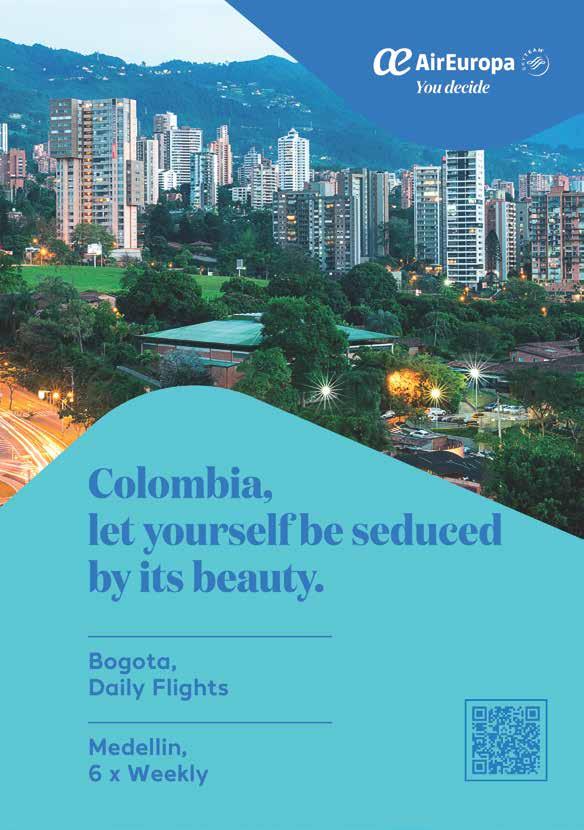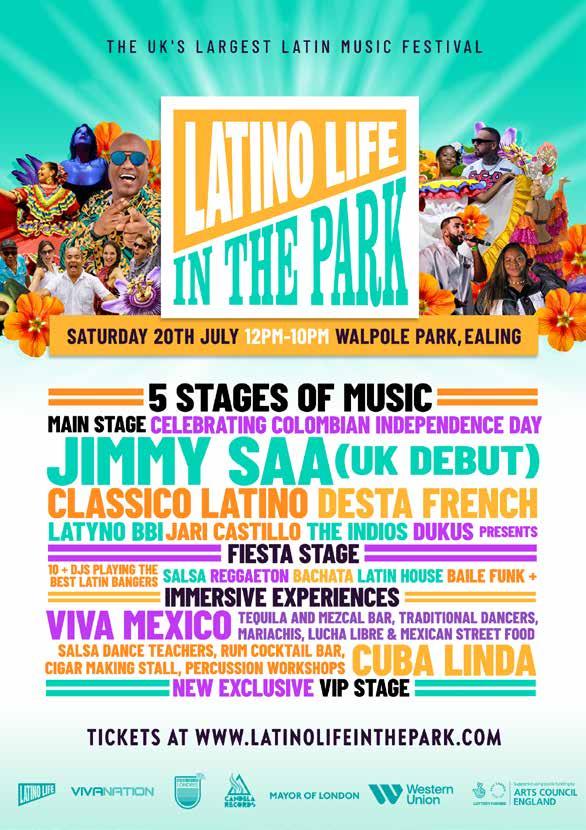




Send money to 200+ countries and territories with Western Union.
£0 transfer fee* on your first online money transfer.
Download the app.
Prefer to send money in person?
Scan the QR code to find an agent location nearby.
This service is provided by Western Union Payment Services GB Limited, a payment institution licensed by the Financial Conduct Authority.
*Western Union also makes money from currency exchange. When choosing a money transmitter, carefully compare both transfer fees and exchange rates. Fees, foreign exchange rates and taxes may vary by brand, channel, and location based on a number of factors. Fees and rates subject to change without notice. © 2024 Western Union Holdings, Inc. All Rights Reserved. All trademarks, service marks, and trade names referenced in this material are the property of their respective owners.







Sometimes we forget to verbalise what is fact. And the great achievements of a community that has over the last 50 years brought so much to Britain definitely needs to be shouted about and celebrated. So it was that this year, when Colombian Independence Day fell on a Saturday, we asked Ealing Council to put LatinoLife in the Park in its diary. Not only are we planning to put on a party that will make London’s largest Latin community proud, but we want to tell you the story of how this community came about and what makes it special. From grafting in poorly paid jobs way below their qualifications to building successful businesses, from fighting for justice to inspiring audiences, Colombians have shaped our economy, society and culture and belong in Britain’s most distinguished circles. So yes, read all about us in these pages, but, more than anything, relish in a day of great music, dance, food and culture and take away a little piece of our stardust with you!

We couldn’t be prouder of LatinoLife’s second year at the Lambeth Country Show, which saw 90,000 Londoners rock up in Brixton’s Brockwell Park on the weekend of 8th and 9th June. On Saturday, we brought the battle for the hearts of London’s dance-hungry community, as the electrifying beats of reggaetón faced off the rhythmic pulses of baile funk. For the first time in the UK, these two powerhouse genres competed head-to-head in a sound clash festival format. On Sunday, we transported audiences to streets of San Juan, Havana and Cali with our stellar line-up of world-class performers, including Rene Alvarez and his band paying tribute to Hector Lavoe, the Omar Puente Charanga Jazz Sextet, Dorance Lorza & Sexteto Café, and Sarabanda led by Sara McGuinness. Hosts Yanet Fuentes and Edwin “Salsa” took us through this vibrant fiesta along with top DJs spinning sizzling Latin beats throughout the day, whilst the dancers of Talentos School of Salsa (even the cute kiddies) wowed us their wild moves!
See more photos from our events at www.latinolife.co.uk/galleries



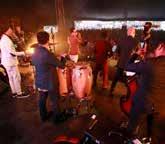




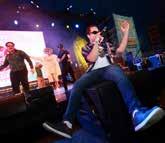

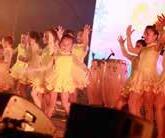


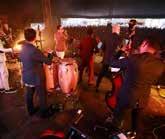










In the vibrant world of Colombian salsa music, few names resonate as powerfully as Jimmy Saa. Known for his electrifying performances, soulful voice and bringing the rich sounds of his native Buenaventura into a unique brand of salsa, the ex-Grupo Niche singer and percussionist has carved out his own niche in Latin music. A story of passion, love and pride in his beloved cultura del Pacifico, Jimmy Saa is an artist whose life is as dynamic as his music. Maria Lopez talks to El Embajador del Pacifico ahead of his London debut at LatinoLife in the Park.
Precious memories of my adolescence come back to me: quinceañeras filled with singing and dancing to Cali Pachanguero, De Boca en Boca, Tempestad, La Primera Dama, and Conflicto de Amor. As I sit preparing my interview with Jimmy Saa, I can hear the infectious rhythms and soulful lyrics that were the soundtrack to many joyful nights. Whether as singer of Grupo Niche or as a solo artist, Jimmy Saa’s vibrant personality and unique tumbao evoke cherished moments, bringing them alive again.
Born in Buenaventura, on the Pacific coast of Colombia, known to be rich in AfroColombian culture, Jimmy Saa’s musical journey actually began in Esmeraldas, Ecuador, where he moved at the age of seven with his uncle Polo, who had an orchestra. Music was a way of life in his family and Saa was immersed in the rhythms of salsa, cumbia, and the traditional sounds of his heritage. “Music was everywhere,” Saa recalls. “It was a part of every celebration, every gathering.” But the real task for Jimmy was convincing his uncle that he had what it took to be a singer.
“My uncle told me that if I wanted to sing, I had to carry the instruments first and learn the business. So I started as a stagehand in my uncle’s orchestra.” Little by little, Jimmy learned how to play percussion, the conga, timbal and bongo. “My uncle Polo, and all of the members from the orchestra, were my first musical teachers.”
Finally, after a year of trying to convince his uncle to let him sing, Polo agreed. Songs like Juliana from Cuco Valoy and Roberto Torres, Oscar de Leon’s Llorarás and Pensando en Ti from Cheche Mendoza were Jimmy’s first musical trials as a singer. Then, he moved to Lago Agrio for two years and started singing in different clubs. This early exposure laid the foundation for his future, shaping his musical tastes and inspiring his first steps into the world of performance.
After moving back to his hometown, Buenaventura, Jimmy began performing in bands like Integracion Porteña, where he built a reputation for having a powerful voice and charismatic stage presence. He then started working with La Octava Dimensión under Santiago Mejias, for five years as a bongocero and singer.
Suprema Corte was just starting their music project, and allowed Jimmy’s dream to come true with his first recorded song El Velorio de Tito and the opportunity to sing and tour in the USA, Latin America and Europe. The band’s director, Andres Biafara, knew Jimmy was different. “Your voice is unique; you were born for this,” he told him, encouraging Jimmy to keep on pursuing his singing journey.
After five years with Suprema Corte, Jairo Varela made his third attempt to recruit Jimmy. In 1996, Varela’s persistence paid off, and Jimmy decided to join Grupo Niche, a turning point that catapulted him into the limelight and solidified his place in the international salsa music scene.
“My music is a reflection of who I am. It’s a mix of the old and the new, a celebration of my roots and my journey.”
Jimmy began with Grupo Niche as a bongo, cowbell, and conga player, but during a live performance in Ecuador, Varela allowed Jimmy to sing “Buenaventura y Caney” for the first time. After witnessing Jimmy’s unique style, Valera declared to the group, “From now on, if Jimmy wants to sing, he can sing anything he wants.”
La Octava represented Saa’s first of many milestones; his first USA tour and his first soloist debut as a singer with Canovita. By now Jimmy was considered one of the most sought after musicians in Colombia, receiving offers fast and furious from the likes of La Supreme Corte and Grupo Niche, one the most iconic salsa bands in history. Initially, Jimmy rejected Jairo Varela’s offer to join Niche. “I rejected Grupo Niche at first because I was going to be a bongo and cowbell player,” Jimmy explained. “I wasn’t going to sing, so I chose Suprema Corte instead.”
Jairo Varela was a visionary, Jimm claims, who taught him how to lead, manage a group with serenity, and maintain great discipline. “He instilled in us that musicians had to live from their art. He wanted to change the bad image of the music world, where many had vices.











He emphasized that we should be different, and so we were. He demanded discipline from us.”
“Jairo Varela instilled in us the idea that musicians had to live from their art. He wanted to change the bad image of the music world, and the vices many musicians had. He emphasized that we should be different, and so we were. He demanded discipline from us.”
Jimmy Saa remained with Grupo Niche forfour years. His tenure with the band - where he honed his skills as a percussionist, vocalist, and showman - helped solidify his reputation in the salsa world and laid the foundation for his solo career. The exposure to different styles and the high standards of the band contributed to his musical evolution.
It was while with Niche that Jimmy started to think about a solo career, drawing on his own heritage from the Pacific coast, which was distinct from that of Cali, where Niche hailed from. What Jairo had done for Cali, putting it on the world map as ‘the capital of salsa,’ Jimmy wanted to do for the rich music of Buenaventura, which is still less well-known.
Today, what sets Jimmy Saa apart is his blending traditional folklore of the Pacific with modern salsa, incorporating instruments native to that coastal region, such as the Marimba, to create a musical style that is both innovative and deeply rooted in his heritage. “My music is a reflection of who I am,” says Saa proudly. “It’s a mix of the old and the new, a celebration of my roots and my journey.”
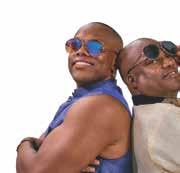



Before launching his solo career, however, Saa took courage from other great teachers who encouraged him to develop his own style, including fellow Buenaventuran, Yuri Buenaventura, who he started travelling with throughout France. “I showed Yuri my first songs and he told me he was certain I was meant to go solo,” says Jimmy.
His other music inspirations include Oscar de Leon, Los Bukis, Sergio Vargas, Marc Anthony, Fruko, Orquesta Guayacán, El Gran Combo, Irakere and Joe Arroyo, who all had their distinctive sounds. But the final catalyst in helping Jimmy make the final leap to showcase his own creations, was an encounter with the great Celia Cruz, to whom he confessed his dream of being a solo artist.
“Celia was fundamental in my career,” Jimmy says. “Celia told me ‘Lo que sea que hagas, hazlo bien. Tu tumbao es diferente. Te va a ir bien, no te preocupes.’”
And so Saa released his first solo project with his salsa/folklore fusion album Tempestad. Jimmy knew that it was not enough to be a good singer, however, if he wanted people to hear him, he had to take matters into his own hands.


So, he became his own promoter, tirelessly selling his music and touring until he achieved national and international success. He distributed his music to Ecuador, Peru, the USA, and Europe, gradually establishing his name as Jimmy Saa. As his efforts paid off, people began to recognise his name, his distinctive tumbao, his unique golpe, and his undeniable flavour.
“Celia(Cruz) was fundamental in my career. She told me ‘Lo que sea que hagas, hazlo bien. Tu tumbao es diferente. Te va a ir bien, no te preocupes.’”

Jimmy is a complete artist: a great performer, a prolific songwriter, who infuses his lyrics with messages of love, resilience, and cultural pride. While Tempestad, launched Jimmy Saa’s solo career, it was Conflicto de Amor that established him as the Embajador del Pacífico. “To be considered an ambassador means to represent my country, my music, all musicians. It also means being humble and working for the people I represent,” he reflects.
Behind the scenes, Jimmy Saa is a devoted family man and a passionate advocate for his community. “Family is everything to me,” he shares. “They are my biggest supporters and my source of inspiration.”







































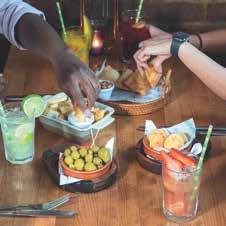




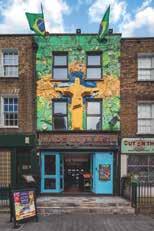







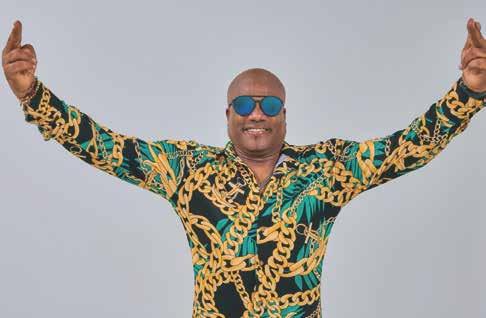
His commitment to his roots extends beyond music, helping the next generation of artists find their voice. “My biggest advice for young artists is to study, que no hagan música por hacer. The goal is to make music that can stay in people’s hearts for the rest of their lives. La música no tiene afán, no tiene carrera. You have to be patient, trabajar las canciones. Todo se va dando, little by little.”
As Jimmy Saa looks back on his remarkable journey, he remains grateful for the opportunities he has had. “It’s been an incredible ride,” he says with a smile. “But there’s still so much more I want to do.”
“The goal is to make music that can stay in people’s hearts for the rest of their lives. You have to be patient, trabajar las canciones. Todo se va dando.”
20-year career. After this European tour, he has a global tour in his sights, to continue perfecting his craft and, who knows, perhaps a Grammy. With his unwavering passion and dedication, there’s no doubt that Jimmy Saa will continue to be a driving force in Latin music, bringing his unique salsa con folklore to every stage, inspiring audiences and fellow musicians alike for years to come, “haciendo las cosas bien” as he always dreamt of.
On the horizon are three albums: a folklore-fusion album, an urban album and a masterpiece album showcasing his
“I want my music to make people feel at peace, happy and joyful,” says Jimmy. “To be able to see a daughter, son, mom, dad, friends and strangers listen to us, to be a uniting force, that means the world. Que nunca pase de moda, to be remembered for my music. I want that to be my legacy.”
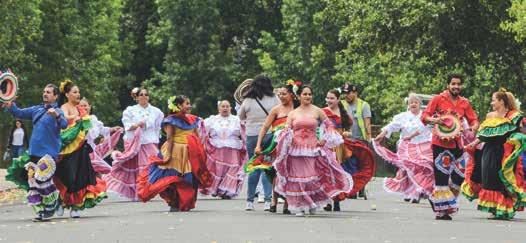
A city of unique amalgamating flavours, traditions and rhythms, London’s rich multicultural tapestry fascinates visitors and residents with its pockets of cultural enclaves. Over the last 50 years, hundreds of thousands of Colombians have made their mark as the UK’s largest Hispanic community. As a consequence, Londoners are never far away from the enticing smell of bandeja paisa, the appetising look of fresh empanadas in shop windows, or the catchy rhythms of salsa music trickling from a local bar. But how did this community come to be? As LatinoLife in the Park celebrates Colombian Independence Day this year, Lauren Williams takes a moment to recount the history, the spirit and determination of this incredible community.















“Iknow many of you have come here to find your dreams.” The words flow from the warm signature smile and glowing cheeks of the pink-haired mermaid goddess known as la bichota, as her confidently Colombian hips straddle the stage in a sparkling leotard. “Well, I’m here to bring you a little piece of home.” The roar of 20,000 Latinos erupts in a wave of emotion. At the second night of Karol G in The 02, little did the audience know that it was making history. Never before had a reggaeton artist sold out two nights at London’s largest arena. And she happened to be Colombian.
More poignantly, the 40,000 majority Colombians delighting in Karol G’s
recognition of their reality, made a real-life mockery of the UK government’s official number of Colombians living in the UK (27,848).
The underestimation itself signals an under-recognised community, made up not only of many undocumented migrants, living and working invisibly, but legal, professional high-achievers who are not recognised because on UK government forms even ‘Latin American’ is not an option given. Officially, they find themselves having to tick the box marked simply ‘Other‘.
taking up low paid jobs were academics, doctors, lawyers and other highly-skilled professionals who had to start from scratch.
“The first wave of Colombian migration was linked with the failing coffee harvests in 1970-80s,” says Cathy McIlwaine,Professor of Geography at King’s College London, whose key publications ‘No Longer Invisible’ (2011) and ‘Towards Visibility’ (2016), were the first to quantify and qualify the Latin American population in London. By the 1980s, she adds, there was a mass exodus
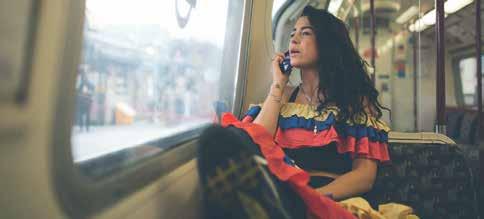
What is real is that the UK has the world’s third biggest Colombian diaspora, after the US and Spain, and that it constitutes the UK’s largest Spanish-speaking community. More importantly, as these two recordbreaking shows exemplify, Colombians are a massive contributor to the UK economy, society and culture. They are cleaners, professors, actors, artists, engineers, entrepreneurs and much more. They make up one of the most hardworking, charismatic, creative and entrepreneurial communities in the UK. And yes, when they are not working, Colombians still find the time to party. And boy they do it well.
How did this Massive Community Come to Be?
Throughout the 1970s, thousands of Latin American refugees arrived, fleeing dictatorships from Argentina, Chile, Brazil and then Central America. The Immigration Act of 1971 had made it possible for Latin Americans to be granted work permits in the UK. Amongst those
of Colombians, who started fleeing the terror of the country’s civil war between left wing guerrilla groups, government forces and right-wing paramilitary groups.
“Colombians vigorously seized the opportunities offered by the UK,” agrees Dr Patria Roman Velazquez, Senior Lecturer at King’s College London and Founder of activist group Latin Elephant.
“My grandfather was a passenger on one of the first planes from Colombia in the 1970s,” says Jacqueline, a third-generation Colombian and founder of clothing brand LatinaStyled.
“He left behind his children, took up the invitation to come to the UK on a work permit that aimed to bring in workers for hospitality. They were promised visas, jobs, and somewhere to stay, however, the reality was that there was neither a job nor a place to stay. They came here with dreams, which were very quickly shattered.”

Most Colombian immigrants began working in positions where speaking English wasn’t required - restaurant kitchens, hospitals and in cleaning jobs. “They worked long hours for insufficient pay and still do,” says Kari Jaldin, Latin American Community Organiser at Citizens UK. “Helping them access the Living Wage Campaign is still one of the main priorities in my work.” Over the decades, having absorbed their work ethic, children and grandchildren such as Jacqueline, whose LatinaStyled became the first Latina-run brand to have a pop-up on Oxford Street, are testament to the sacrifices of these pioneers
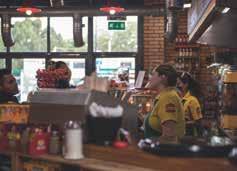
“It
In the noughties a second generation of Colombians arrived in the UK. Many had been living in Italy, Portugal or Spain where, between 2001 and 2005, the Colombian population tripled. But when the financial crisis of 2008 hit, they began looking for fairer financial pastures in Europe.
Gustavo Sánchez, owner of much-loved Colombian bakery and café Juanchito’s in New Cross’ Placita Mall, was one of these “onward Latin Americans,’’ as they are referred to. In 2000 Gustavo parted with his four children, leaving them in Bogotá, where he had learned to perfect the texture of a pan de bono from his father, an experienced panadero. Choosing to move to Spain first, Gustavo settled well, setting up a café and bakery business. “As a Colombian in Spain, it was very easy,” he says. “Within 3 years, I had secured my papers.”
After the crisis hit Spain, he couldn’t make ends meet and eventually left for the UK. With his EU passport, Gustavo was able to move to London and secured a job cleaning offices in the West End. Thinking back to those tiring shifts, which started at four in the morning, Gustavo says simply: “it had to be done.”
As I compliment the smooth taste of the Colombian coffee he has brewed for us, Gustavo remembers the disbelief at how bad the coffee was in the big café chains when he arrived in London. As he pushed through the gruelling cleaning work, he dreamed of setting up his own coffee stall, which he eventually did and where we sit sipping a cafecito while soaking in the very Colombian atmosphere. Thanks to making the move in the pre-Brexit period, Gustavo was granted leave to remain in the UK, which he now calls home. “Even the rain reminds me of Bogotá,” He laughs, although admitting. “I am 100% proud of being Colombian…it’s my land.”

For those who are born here, the bi-cultural experience can be quite complex. British-Colombian artist, Sachellys, mentions that most of the British-Latinos here go through “some sort of identity crisis”. Jaqueline recalls the experience of her first day at a predominantly white primary school, where she cried because she wasn’t used to speaking so much English and felt out of place. It was at secondary school, she says, where she
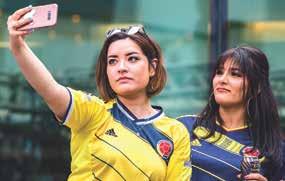
found a “melting pot of cultures,” and finally began to understand her hybrid identity. In her early teens, she began going to Colombian parties, such as Baby Chanéy, organised by Colombian entrepreneur Edwin Serna, where she made connections with other second-generation Colombians. Back then, MSN was also a great way for Colombians to connect across the city.
Edwin, who became known “Mr Colombia” was one of the biggest references for the community through his salsa parties, for both adults and teens. “Every Colombian knew about his salsa parties,” says Maira Cardenas, now in her 50s who for years attended Edwin’s weekly Salsa City and El Peñol in Brixton. “Before the days of reggaeton, salsa was what unified the community, it was in salsa clubs where identities were forged, and Colombian salsa events were the first catalyst for social integration. They were like being in Cali, but right here in London”

After a night rumbeando, partygoers descend on Clapham Common for the feisty football matches of the Latin American leagues, where players show their Latin skills and flair, and the new generation are taught the ‘Latino way’. Edwin fondly recalls grabbing an empanada, arepa, or frijoles con chicharrón brought by parents after a match.”These moments helped the community get to know each other, hear about job vacancies, and even find accommodation.” It’s no wonder that
Colombia played Spain recently in London, despite being the “visiting” team, it felt like the Colombian team was playing at home.
Away from dancefloors and football pitches, the more pious found connection and community through the Catholic and Evangelical churches, or Iglesias de Dios. Father Carlos at the Latin American Chaplaincy of London, whose weekly mass has been bringing Latin Americans together since 2000, says: “Out of the Latin American population, most of my churchgoers are Colombian. They have a great identity for their country and their Catholic faith. It is a big part of their heritage and lives.”
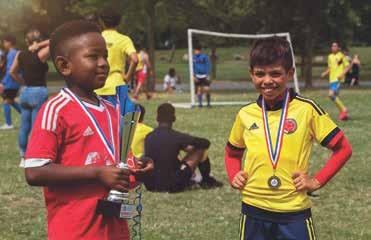
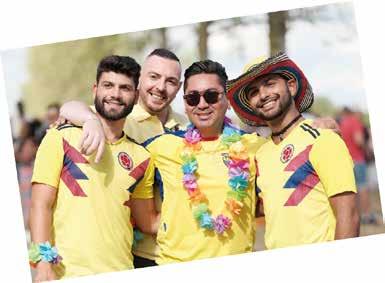
“There’s a whole ecosystem that Colombians have built, in terms of civil society, through church, the arts, cultural centres, restaurants and commercial units,” adds Cathy McIlwaine. “Despite the challenges, Colombians have been very successful.” In addition to these enterprises, Colombians have been key in the formation of organisations, projects, charities, foundations and activist groups that have given support to each other and the wider Latin American population.
Examples include Latin American House, now consisting of a bilingual nursery, a Spanish Saturday school, and drop-in advice centres, or the Latin American Women’s Rights Service (LAWRS), which help and house women fleeing domestic abuse. Another, Empoderando Familias, helps Spanish-speaking parents support their children’s education, to narrow the gaps in progressing to Higher Education. Other organisations such as IRMO, have been instrumental in supporting immigrants, with many now legendary Colombians, such as the award-winning human rights lawyer Laura Villegas, at the helm, helping Londoners from all over Latin America access their rights.
“Colombians have laid the ground for these organisations,” says Kari Jaldin from Citizens UK. “Many of the Spanish-speaking lawyers who help the

wider community are Colombian. They have opened the doors for inclusion for the rest of the community.”
Most famously, Colombians have also led the struggle for better pay and working conditions, particularly in the cleaning industry, exposing shameful pay practices at the UK’s highest institutions, including the Houses of Parliament and University of London. They joke that coming from a country where being a community activist can get you killed, fighting for rights in London is happy days! Nevertheless, the struggle to become visible has encountered formidable opponents, and perhaps the most important activism has been around saving the community’s own cherished hubs from the threat of gentrification and property development.

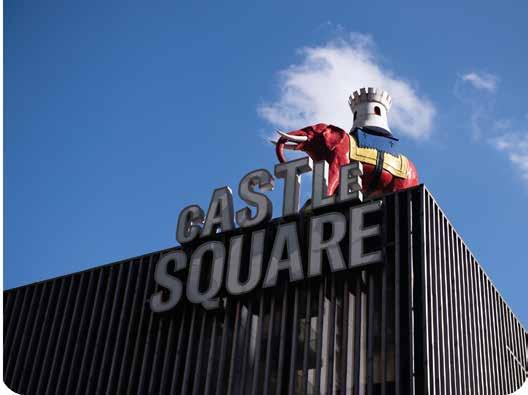
Elephant and Castle, with over 80 small inter-independent Latin American businesses, 72% owned by Colombians, was for many years considered the heart of this ecosystem, while north of the river, Seven Sisters Indoor Market, also known as Latin Village or Pueblito Paisa was so full of Latin businesses, from travel agents to hairdressers, that Seven Sisters station came to be known as Seven Chismes. As developers threatened to remove the community from these commercial areas, two grassroots organisations, Save Latin Village and Latin Elephant stood in their way....
Highlighting the struggle of what she called “the heart of the Colombian community...a sea of yellow, blue and red on football days,” Patria Roman founded Latin Elephant and proposed a ‘Latin Quarter’ model comparable to Chinatown, to formally recognise the business cluster around Elephant and Castle as a ‘Latin Boulevard,’ attracting visitors to the area and supporting
economic development. Sadly, Elephant and Castle’s much-loved shopping centre was demolished in early 2021.
However, because of Latin Elephant’s amazing work in getting widespread media coverage, public and institutional support, it sealed the deal on a relocation fund for 60% of traders, most of whom were Colombian. Meanwhile Save Latin Village’s campaign was so relentless that after 10 years trying to remove the community, the developer Granger pulled out. As of August 2023, Seven Sisters still has 160 market employees, mainly Colombian.


The arts represent a powerful voice for the diaspora, harnessing its creativity. In 2023, the award-winning play ‘My Uncle Is Not Pablo Escobar’ debuted at Brixton House. “It tackled stereotypes, invisibility and underrepresentation of the Latin American community,” claims LatinXcluded producer Cecilia AlfonsoEaton. Another interactive and comedic show, ‘Playing Latinx,’ challenged audiences’ notion of the migrant experience. It’s Colombian director Mariana Milena set up her own theatre company Theatre Mariana to “amplify Latin American voices and tell our own stories.”
Maria Cuervo moved from Bogotá to London in 2018 and worked as a producer at prestigious venues such as The Old Vic. Her most recent production ‘Super Chefs’, tells the story of young Mani, whose mum is Colombian and dad is Mexican, “a London family,” she says. “It shows how being here as Latin Americans shapes us, and also how we shape back.
While Karol G’s visit was a treat for the diaspora, London’s own Colombian music scene continues to soar. On a sunny Saturday in Brockwell park, artist R Louis “¿Dónde está mi gente de Colombia?” to a packed out stage. Colombian pride is in the air with the tricolour flag taking its place up high as people of all ages and backgrounds
enjoy the Latin rhythms at Lambeth Country Show.
On the Sunday, Londoners were treated to a day of salsa bands, with spectacular shows from salsa caleña. “I was blown away by the vibes,” said one attendee, Rafe Offer, who happens to be CEO Sofar Sounds “SO fun - the music, the people, the energy and dancing! Far and away the best thing at the entire festival.” Colombian culture is slowly becoming part of the wider cultural dialogue in the UK,” says Sophie Castillo, one of the new artists creating a buzz in the UK music media. “a lot of British people I know love Colombian food, they love our culture, and I think it’s something that we can share nicely here”.
The UK has long been under the spell of Colombian dance through companies like Cali Swing, Low Rumberos bringing their amazing Cali style dancers to festival stages and regular classes throughout the country. Sanura Dance, a queer dance company offers salsa and bachata in an inclusive environment, bringing together the Latin and queer community in one. Meanwhile, the Afro-Colombian bullerengue tradition is being alive and kicking in the UK, through groups such as Akolá Tambó and Esteben Card’s Bullerengue Circles. And Talentos are bringing Colombian folk all over the UK.

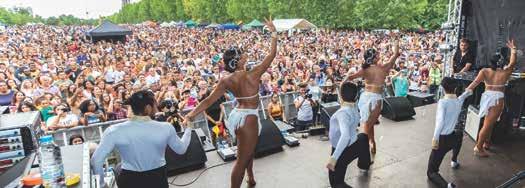
“
Between the urban movement, the energetic salsa scene, passion-fuelled folkloric performances, there is a rich offering of Latin musical traditions in the UK, and a large part of this is thanks to the Colombian diaspora, many of whom are now influencing the UK and international mainstream. The music of award-winning producer Dukus, who has brought his Colombian touch to the likes of Craig David, Ed Sheeran, Central Cee, Fredo, Knucks, Giggs and Stormzy, Wiz Kid can be found of various Netflix series.
Last year, Desta French was the first British Colombian artist to take her Colombian-infused UK genre on a US tour, culminating at the SXSW festival to great acclaim. And another rising star, Sophie Castillo, just opened for international superstar J Balvin, proudly announcing in London-spanglish to the entire 02 arena, ““I am a British Latina. Soy Colombiana, soy Cubana, pero nací aquí en Londres y crecí aquí en Londres. I’m so happy to be here representing UK Latinos.”
Cathy McIlwaine laments that while UK Society is already infused with Colombian flavours, the country’s institutions are still very much behind and keeping “Latin Americans under the radar.” So far five London boroughs officially acknowledge ‘Latin American’ and King’s College London is the university in the UK to recognise this ethnic category.
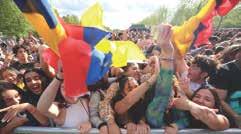
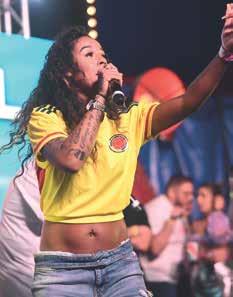
But Colombian pride, innovative attitude, resourcefulness and the resilience of the Colombian community in London shines through. “we thrive in difficulty”. says Maria Cuervo referring to the history of Colombia. “It is a “life skill which we find ourselves tapping into everyday here in London.”
From liberation of Spanish rule to battling present-day challenges, Colombian Independence Day celebrates the strength of the Colombian people. So at LatinoLife in the Park, on this special day in 2024, let’s raise a shot of aguardiente to the Colombians who paved the way back in the 70s for this thriving community which continues to flourish as the younger generations hold their roots close and fight for the future.
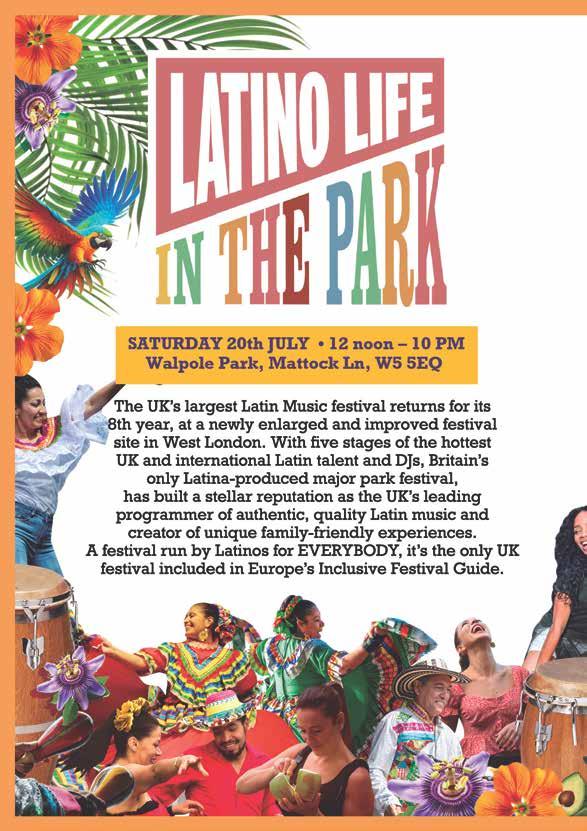

Delivering a fiesta the capital’s largest Latin community deserves as it celebrates Colombian Independence Day, from Colombia, living salsa legend Jimmy Saa headlines a main stage of homegrown talent showcasing the creative powerhouse that is the UK Colombian diaspora. Our Fiesta Stage hosts a non-stop dance party fuelled by London’s finest Latin DJs playing the biggest Latin bangers and anthems from salsa, reggaeton, bachata, Latin house and baile funk.
Celebrated for our immersive experiences, Cuba Linda, hosted by Yanet Fuentes, transports festival goers to the Latin Caribbean with live rumba music and Cuban percussion and dance workshops taking place throughout the day. Plus a great selection of Cuban cocktails and food such as the island’s famed ropa vieja (shredded beef) and Cuban sandwiches. While at ¡Viva Mexico! guests can soak up the sounds and spirit of the Aztec and Mayan nations with dance parades, mariachi and Lucha Libre wrestling shows. Sample Mexican food and drinks specialities including a Tequila bar and taco stall.
This year there’s also an enhanced VIP area with its own stage, DJs and entertainment as well as food pop ups and cocktail bars. There’ll be over 30 different Latin-American speciality food stalls as well as beer and cocktail bars. Families are also catered to with an activity-themed Kidz Zone. A celebration for all the family, whether you’re a toddler or a hobbler, in heels or on wheels, don’t forget your dancing shoes!
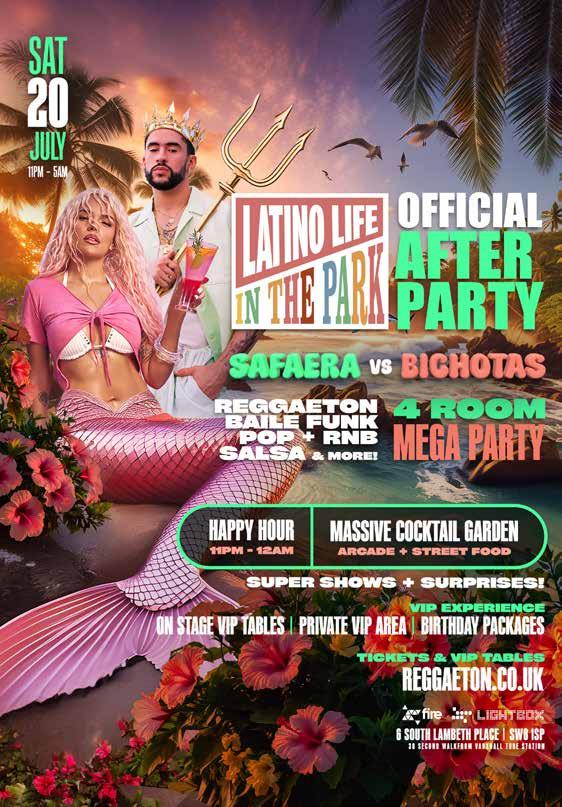
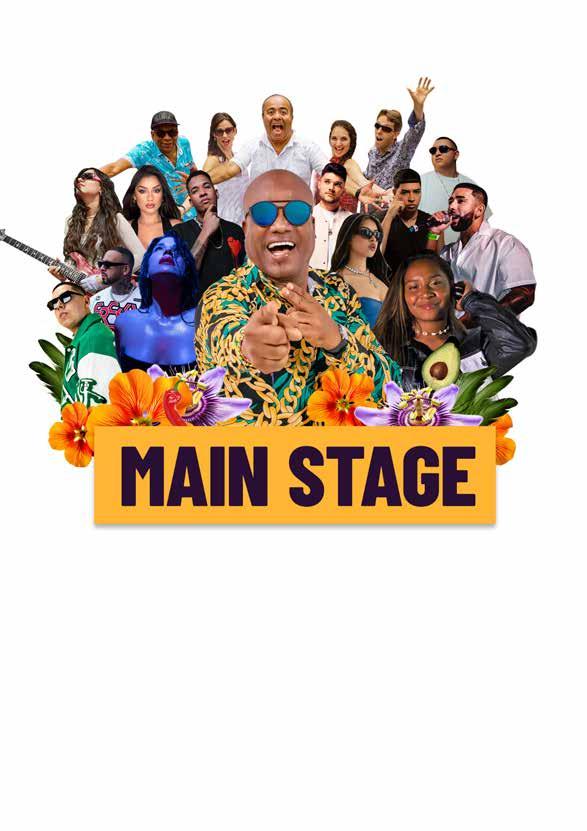
For the first time ever, LatinoLife in the Park falls on Colombian Independence Day and what a party this year promises to be! From Buenaventura, Jimmy Saa, the maestro of salsa infused with folk from the Pacifico (with special guest Dorance Lorza on vibes) culminates a line-up of homegrown Colombian talent Desta French, Classico Latino, Jari Castillo, The Indios, Latyno Bbi and awardwinning producer and songwriter, Dukus, who hosts a sound clash of London’s freshest urban talent fusing reggaeton, afrobeats, rap, soul and grime. On the decks: DJs Fercho Cabezón and Cano.


8:00pm
A modern-day salsa classic, singer and percussionist Jimmy Saa, aka the ‘Ambassador of the Pacific’, is known for his superlative arrangements, killer instrumentation and impeccable delivery. Having honed his craft with the most iconic Colombian bands - from Grupo Niche and La Octava Dimensión to La Suprema Corte and Yuri Buenaventura - Saa made a name for his extended intros which are so well crafted and chocka-full of swing that you just know that you’re in for an extraordinary ride.
As a solo artist, his first album tempestad became an instant classic on its release. Three stunning tracks Saa Libre, Tempestad, and La Primera Dama marked Saa’s style of high energy, soulful salsa, while subsequent hits, Mi Tierra and Mujer Colibri cemented him as a pro ducer of modern salsa at its finest.

Very much a man of Colombia, and proudly from the Pacific coast, the beating heart of contemporary salsa music, Saa injects the flavours of his native Buenaventura into the nooks and crannies of his songs; his live performances accompanied by the marimba instrument, giving his music unique musicality and sabor!
He will be accompanied by London’s very own legend, Dorance Lorza, originally from the neighbouring Colombian city of Cali, who will lead an all-star band to rock the audience with the finest salsa from the motherland, so it can celebrate Independence Day in true Colombian fashion.
6:45pm
In a fusion fiesta that brings grassroots salsa and classical music to new audiences, Classico Latino is one of the most innovative Latin music collaborations to have emerged from the UK in recent years. Led by Colombian pianist Ivan Guevara and British cellist/conductor Graham Walker, the international ensemble combines a heady mix of classical piano, cello and violin, with Latin percussion, bass and vocals. With two internationally acclaimed albums under its belt, recently Ivan lured Colombian salsa legend Fruko out of retirement to record an album of Colombian salsa classics, culminating in critically acclaimed sell-out performances in London and Bogotá. By bringing together two highly sophisticated genres the result is a music lover’s match made in heaven.

5:30pm
Born to Colombian parents, Desta’s blend of Latin Jazz, RnB, Salsa, Cumbia, Hip- Hop, has resulted in her very own Colombian sound straight outta Camden. She is the first UK born Latina artist to have an entirely Spanish song played on BBC Radio and is the only British-Latina artist to embark on a North American tour, including at SXSW festival, supported by PRS, Selector Radio and the BBC. Back from touring Mexico and a plethora of new singles with her band, Los Milagros, she’s ready to rock her UK Colombian home crowd this summer.

3:30pm

4:30pm
Led by Colombian producer, singer-songwriter and guitarist Juan Contento with Colombian producer and drummer Felipe Rojas. The Indios is a high-energy experimental project born out of South London, that combines elements of traditional Colombian music, contemporary electronic sounds, and the stage presence to get the crowd pumped. The Indios released their latest single “El Barrio” in January 2023 and impressed both the public and industry audience at our Incubator Showcase January at Rich Mix.
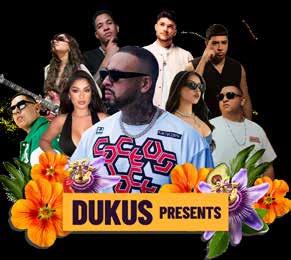
Presenting the annual showcase of young Urban Latin UK talent is one of the best examples of Colombian music achievement in the UK. Award-winning Colombian producer, songwriter, musician sound engineer and musician Dukus grew up in South London, learning classical piano from the age of three, and has become London’s most successful Latin producers, having worked with Craig David, Ed Sheeran, Central Cee, Fredo, Knucks, SteffLondon, Millionz, Giggs and Stormzy, aswell as dancehall royalty Popcaan and Cream of the Crop and afrobeat artists Wiz Kid, Mr Eazi and Eugy. Curating his own showcase, Dukus brings together the most exciting rappers, reggaetoneros and urban talent to come out of London in a sound clash of salsa, hiphop, reggaetón, drill, afrobreats and other London sounds. Expect a fiesta total from…Valenciz, A Nahomy,Sanco, Babo Flow, Lisey Tigra & Yvli.

2:30pm
From LatinoLife’s Talent Development Programme, we’ve chosen this young protégé who we think has the best Span ish voice in the UK right now. Born and raised in Enfield to Colombian parents, Jari found her phenomenal chops at school, in competitions and at a youth opera company. Her unusual talent for singing Latin American standards was soon discovered by Las Adelitasthe UK’s only female mariachi band – where she became the lead soloist at the tender age of 17. At just 19 years old, Jari has since opened shows for the late Pastor Lopez, El Gran Combo, and every time we hear her sing we want to show her talent to the world. Jari makes her festival debut with a repertoire of popu lar songs from the motherland, plus rancheros and much-loved corridos. We can’t wait to hear this star-in-the-making show the world the fine Colombian talent right here in the UK.


1:30pm
From South London with a sweet soul voice, Colombian born Latyno Bbi mixes reggaeton, soul and pop with playful, cheeky energy. Singing in both Spanish and English, his distinctive style and blend of cultural influences adds a new promising voice to London’s creative cross-genre music scene.
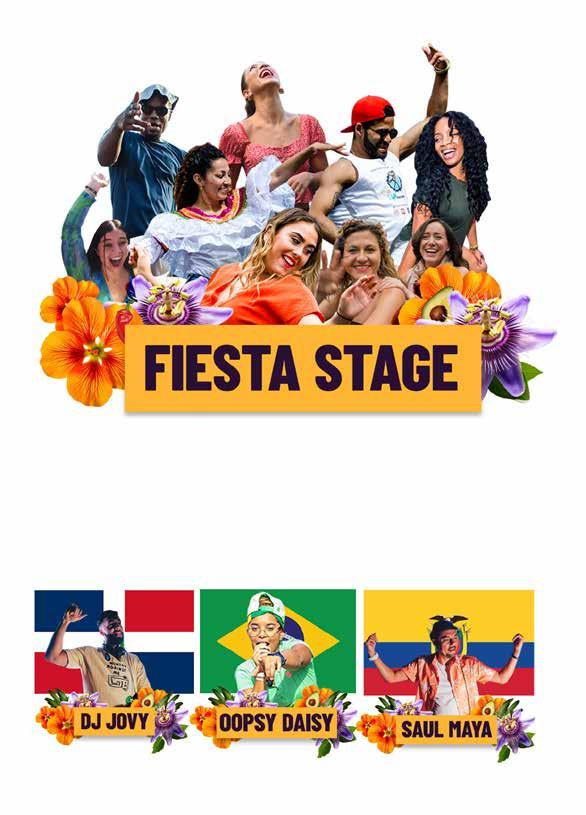
On our second stage, London’s best Latin DJs will be fuelling the party from 12 noon to 10pm with the biggest Latin bangers, taking you on a journey through reggaeton, salsa, bachata, cumbia and merengue via dembow, Latin house, baile funk and samba, guaranteeing a party that you won’t wanna leave!
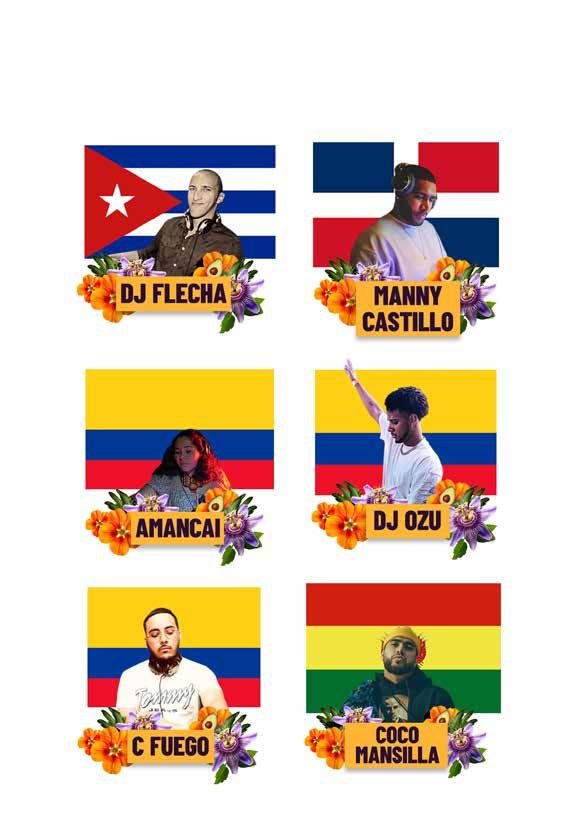
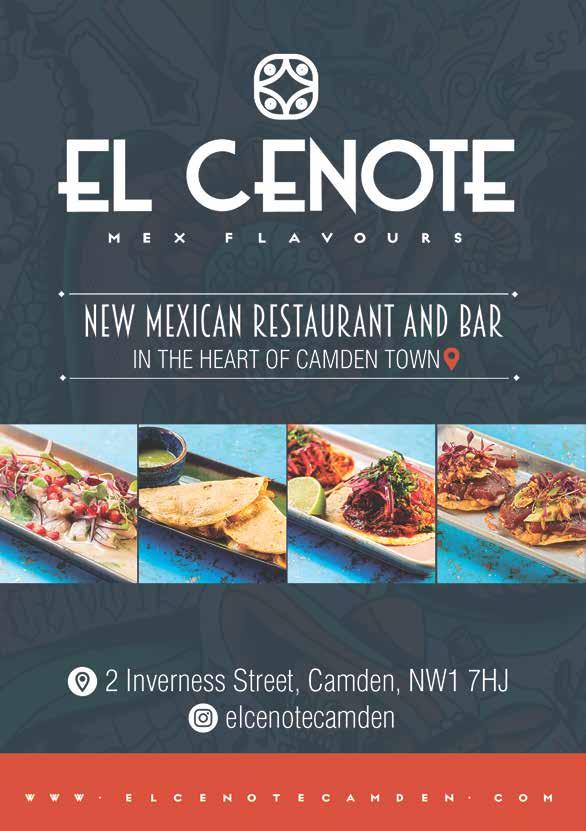
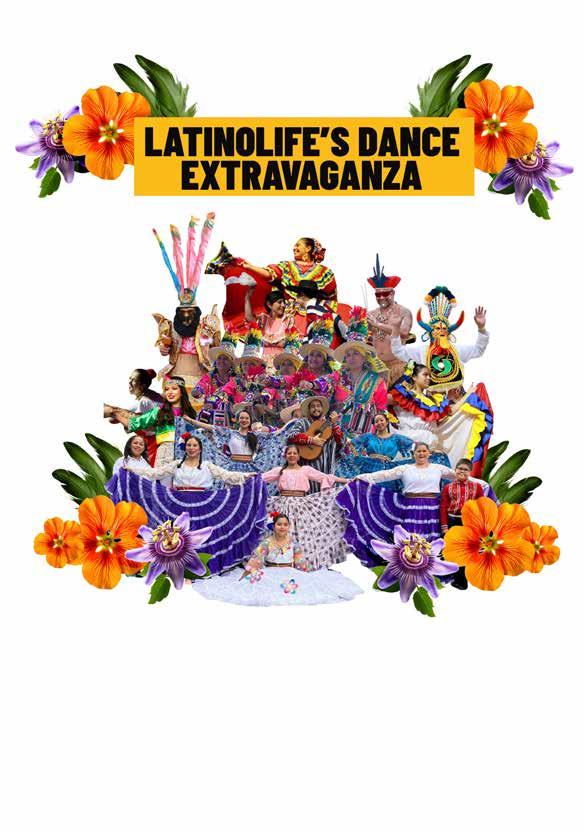
Due to popular demand, after the huge success of our dance parades at LatinoLife’s festivals last year, we are bringing back the wonderful dance and drumming troupes, representing countries from all over Latin America. Expect a kaleidescope of colourful costumes and diverse sounds, as up to 300 dancers and drummers, pulsate through the festival, delivering a guaranteed feast for the senses!
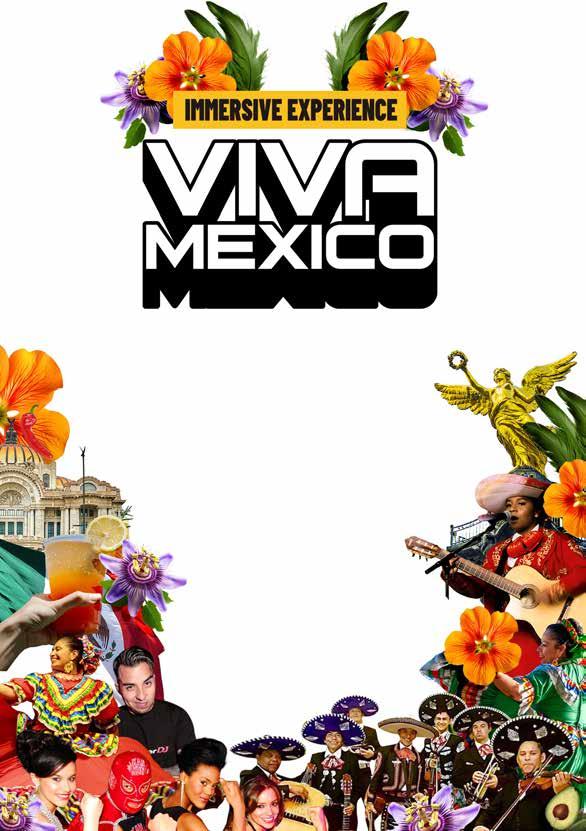
At LatinoLife’s ¡VIVA MEXICO! we invite everyone to immerse themselves in the magical spirit of Mexico with Mestizo Dance Group, Mariachi El Mexicano, Lucha Libre and much more. Meanwhile DJ Zurdo and DJ Igler will be spinning the sounds of this amazing culturefrom rancheros, mariachis, corridos, norteño, banda, cumbia to modern day Mexican pop and rock. Enjoy all this whilst sipping on sumptious margaritas and palomas at our Mexican tequila bar and the best tacos and eating other mexican street food.
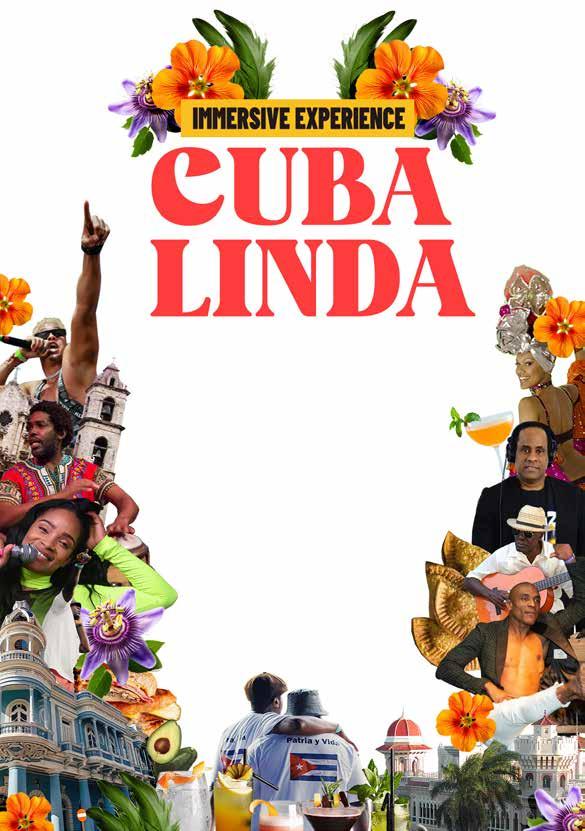
Hosted by Cuban Salsa goddess Yanet Fuentes, Cuba Linda will transport festival goers to the Latin Caribbean with live rumba music from Randy Lester y Su Sangre Africana and Cuban percussion and dance workshops by rumba master Lazaro Lopez taking place throughout the day. Meanwhile DJ Green Papi will be pumping Cuban bangers all day long. Plus a great selection of Cuban cocktails and food such as the island’s famed ropa vieja (shredded beef) and cuban sandwiches.

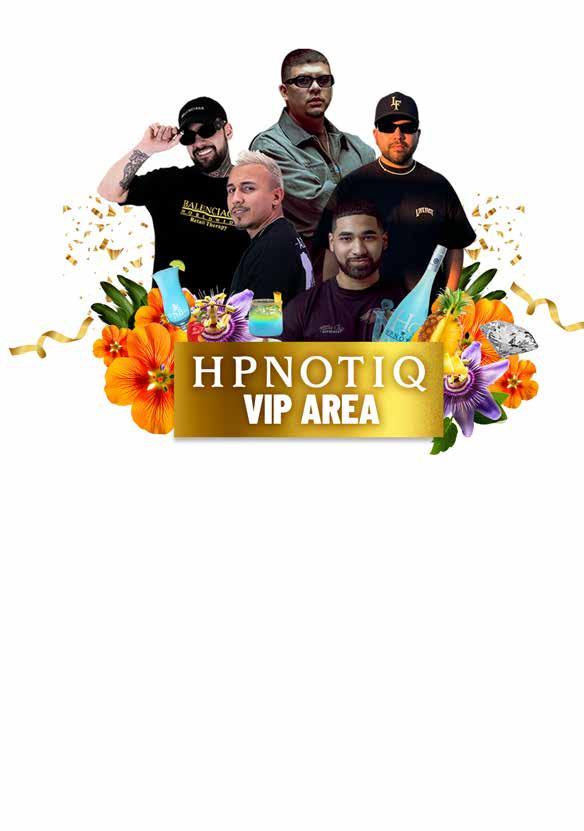
Get ready for an unparalleled experience as we unveil our first-ever enhanced VIP area, presented by Hypnotic! This exclusive zone features its own stage, top DJs and premium entertainment, creating an intimate and electrifying atmosphere.
We are excited to introduce , a brand-new party experience that delivers the finest in Latin and tech house music. Prepare to be mesmerised by a fantastic lineup of DJs, each bringing their unique beats and energy to the stage.


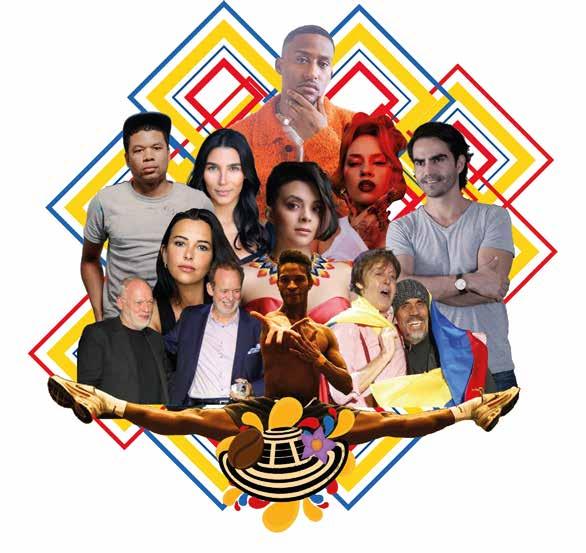
Enterprise and creativity are in any Colombians’ DNA, it’s part of our necessity and hence our everyday lives. As Latino Life celebrates Colombian Independence with a massive festival, we shine a light on the amazing Colombian talent here in the UK. From dancers, painters, photographers and actors to botanists, opera singers and Youtubers, here are some outstanding British parseros you should know about.

Phil Manzanera, producer and lead guitarist Roxy Music
Fans of British music will know Roxy Music, one of the most iconic British Prog-Rock bands of the 1970s and 80s, formed by Brian Ferry, Brian Eno and lead guitarist Phil Manzanera. Manzanera went on to produce albums for Pink Floyd, David Gilmour and John Cale as well as some of the most exciting
rock artists to come out of Latin America: Os Paralamos, Fito Páez, Aterciopelados and Draco Rosa, to name a few. His forays into Latin Music, was a clue to something very few British fans knew; that Phil was half-Colombian, and spent most of his childhood in Latin America, including Venezuela, Colombia and Cuba, whose music massively influenced him. In Havana, aged 8, Phil witnessed the Cuban revolution and encountered his first guitar, owned by his mother, who taught him the South American folk songs she loved. Phil went on to live in Venezuela and Colombia before being sent to boarding school in England where he became engrossed in the 70s music scene.
Oscar Murillo, painter
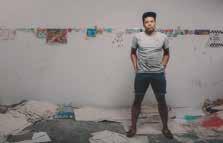
Born in La Paila, a small town in the Valle del Cauca, Oscar Murillo moved to London when he was 10 years old. Murillo worked as a teacher in a secondary school while studying, but soon after graduating from the Royal College of Art in 2012, Murillo’s career rocketed when Miami art dealers Don and Mera Rubell - known for discovering the likes of Basquiat and Keith Haring - saw his paintings at an independent art fair and asked to meet him. By February 2013, Sotheby’s, Christies and Phillips sold 24 pieces for a total of $4.8 million. In 2019, he co-won the Turner Prize after requesting that the jury award the prize for the first time to all four nominated artists. Extremely modest, this monster of the art world profile keeps a low profile, but he is hugely influential and respected by critics, artists and audiences for his work that explores “the body in transit” (curator Legacy Russell).



Yung Filly, Youtuber and comedian
Andres Felipé Barrientos, known professionally as Yung Filly, is a British YouTuber, internet comedian, singer, and general social media personality. Born in Cali he moved to the UK in 1997 as a refugee and was raised in Lewisham. He began his YouTube career in 2013, starting a music career in 2017. Beginning in 2018, he appeared on numerous shows, several of which he hosted. He now has nearly two million subscribers and was also part of the comedy group known as The Wall of Comedy. He has also collaborated on hit songs including ‘Hold’ and ‘Clean Up’.

Originally from the city of Buena Aventura on the Pacific coast of Colombia, dancer Fernando Montaño was a soloist with the Royal Ballet. He joined the Company in 2006 and was promoted to First Artist in 2010 and Soloist in 2014, dancing in many prominent roles at The Royal Opera House. His has won many awards, modelled for Vivienne Westwood and choreographed his own shows. Since leaving the Royal Ballet 2019 and has performed all over the world including with the Cuban National Ballet as well as in the US, Peru, Paris and Colombia, and was also a judge on Colombia’s Dancing with the Stars’. In 2019, he was made an Honorary Doctor of Arts by The University of Bath.

Julieth Lozano, award winning soprano
Named one of Opera Wire’s 2023 Top Ten Rising Stars, Julieth Lozano wowed audiences worldwide when she scooped the coveted Dame Kiri Te Kanawa Audience Prize at the 2023 ‘Cardiff Singer of the World’ Competition. Julieth graduated with a Masters in Vocal Performance and an Artist Diploma in Opera from the Royal College of Music, under the tutelage of Dinah Harris. An Irene Hanson and Independent Opera at Sadler’s Wells scholar, Julieth was a 2019/20 Young Artist at the National Opera Studio in London. Julieth’s 2022/23 season commenced in her native Colombia as Susanna in Le Nozze di Figaro at Teatro Mayor under the baton of Martin Haselböck. In 2023, she made her both debut with Welsh National Opera at the Dubai Expo and with English National Opera at Glyndebourne Festival as Papagena in Die Zauberflöte, and is well on her way to a formidable career.
Sasha Keable is a singer and songwriter of Colombian descent from South London. In 2013, she collaborated with Disclosure on the single “Voices” and toured with the duo around the UK. In 2014, she supported recording artist Katy B on her UK tour. She has released two extended plays to date, Black Book (2013) and Lemongrass and Limeleaves (2014). Both were signed to Tinie Tempah’s independent record label Disturbing London. Sasha recently released ‘Hold Up,’ a single excavating deep-rooted heartache, which received critical acclaim.

Chucho Merchán, bass guitarist (The Eurythmics, The Pretenders)
Chucho Merchán is one of British rock’s most successful bass guitarists. After arriving from Colombia in 1974 to study at Cambridge University, Chucho spent two decades playing and touring with The Eurythmics, The Pretenders, George Harrison, Pete Townshend (The Who), David Gilmour (Pink Floyd) and Bryan Adams among others. In 1986, Chucho organized a charity concert at The Royal Albert Hall involving all the above artists, in aid of the survivors of the Nevado del Ruiz volcano eruption, which killed 25,000 people. Chucho now lives between Colombia and the UK where he continues to work in music, while campaigning for human and animal rights.



Trained at the prestigious Drama Centre London, (known in the industry as the ‘trauma centre’ for its rigorous yet effective training) with notable alumni like Tom Hardy, Michael Fassbender, and Anne-Marie Duff, this Colombian- British Jessica Maria Gilhooley has started to become a name as a rising Actor. She worked on the BAFTA-winning TV series “I Am” on Channel 4, starred in Miramax’s recent box office hit “The Beekeeper” alongside Jason Statham and Jeremy Irons, and is impressing audiences in the multi-award-winning British film “Halter” as Amanda. Her theatre credits include acclaimed performances such as Elaine Robinson in “The Graduate,” a sold-out run as Miss Fern in “The Bad Seed,” and a memorable US tour with the renowned comedy group Upright Citizens Brigade.
Lorena Andrea, actor
Born in Camden to Spanish and Colombian parents, Andrea took acting classes at the Anna Scher Theatre, started appearing on Television as a teenager and has forged a successful career as working actress ever since. She followed her first feature film ‘Jesters’ in 2016, playing Colombian student Sofia, by starring in three films 2017, including ‘Unhinged’, ‘House on Elm Lake’ and Michael Noer’s ‘Papillon’ as Lali, a Wayuu Indian woman who rescues Papillon Charlie Hunnam. Since then, Andrea has starred as Lotsee opposite Chris Routhe in the 2019 western ‘No Man’s Land’, as Sister Lilith in the Netflix fantasy series ‘Warrior Nun’ and in 2023, landed the part of mermaid princess Perla in the 2023 liveaction film adaptation of Disney’s The Little Mermaid. Big things lie ahead for this truly British-Colombian actress.


Dairo Vargas paints with panache and displays a capacity for draughtsmanship not often seen today. Reminiscent in some respects of Futurism, his paintings are characterized by a feeling of constant movement, even dance, with an emphasis on the layers and depths of different emotions. There is a desire to penetrate deep into the psyche and bring feelings and thoughts to the surface. The fluid works seem to vibrate with change. Dairo is also an educator and campaigner on mental health issues, in 2019 Dairo he was awarded a LUKAS for his contribution to Society.
